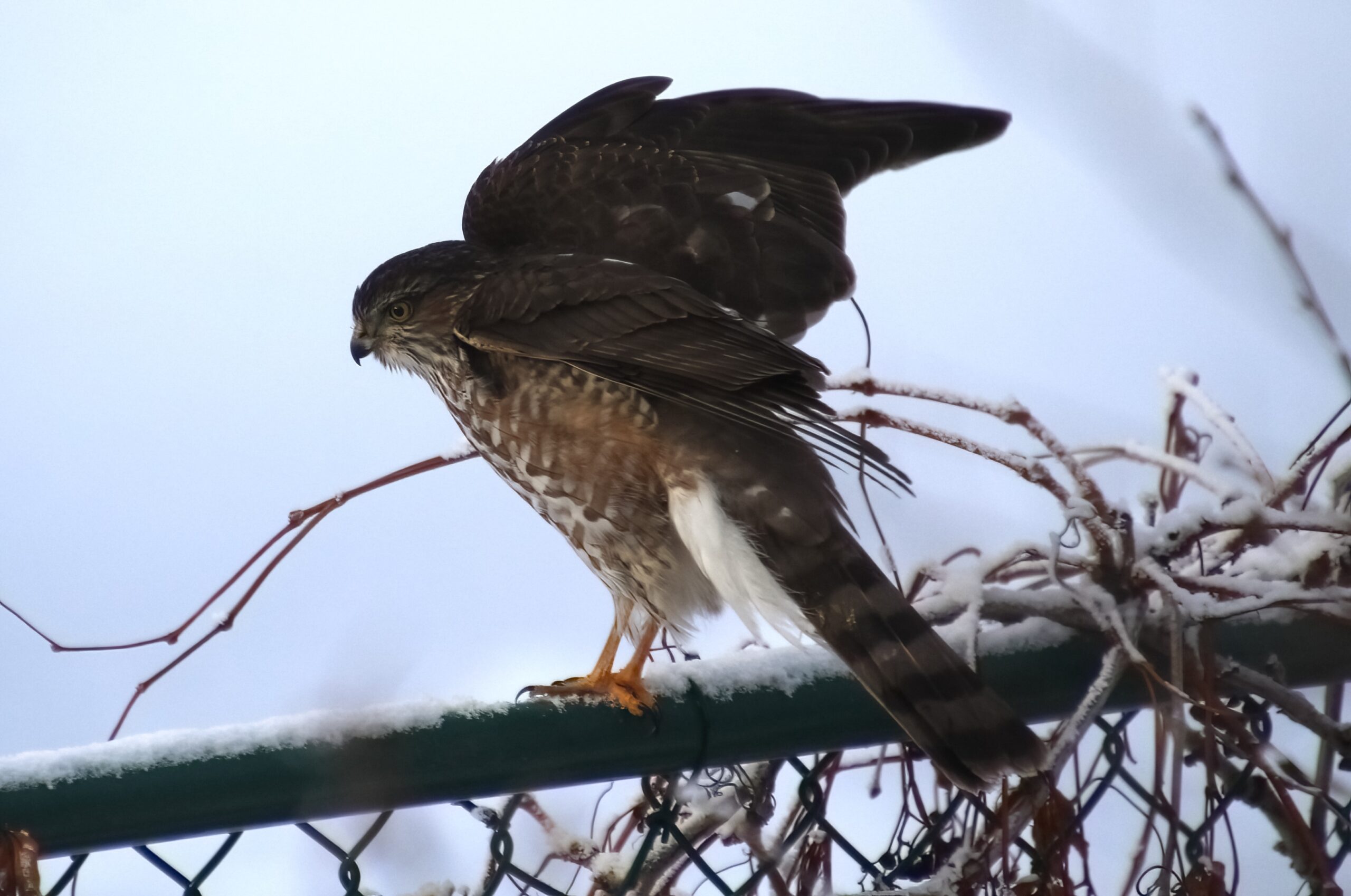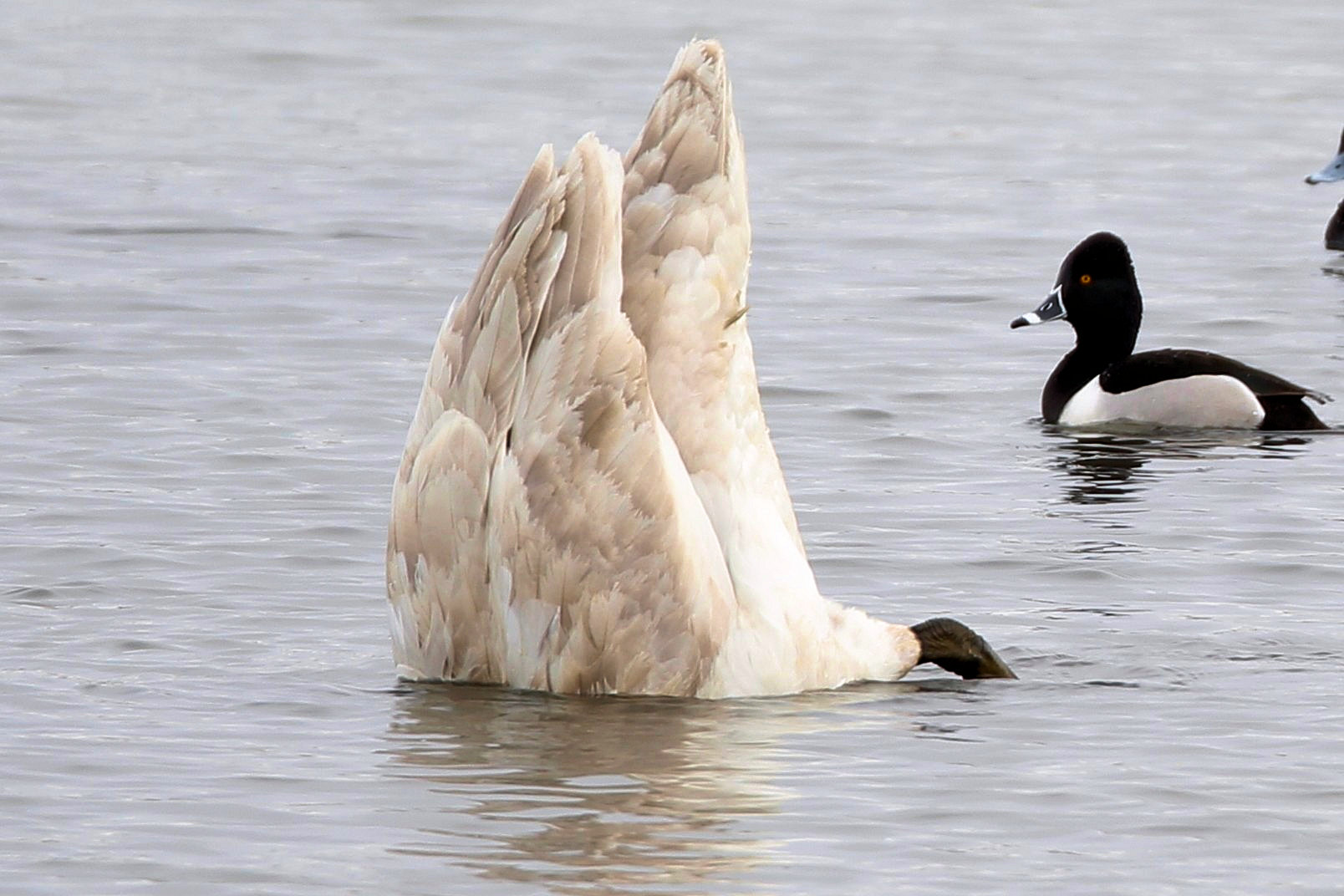Our spoiled sparrows that hang around our deck, searching for “beak-outs” at the feeders, attract excitement every now and then. A sudden dive into a thorny shrub by the mob of house sparrows means one thing. One of Alberta’s hawks, the smallest of our accipiter trio, the Sharp-shinned Hawk, is in hunting mode.
Such accipiters have short, rounded wings, well adapted for hunting through wooded areas Long tails enhance their steering agility. In watching this hawk in flight, one will often see the four or five rapid wing beats followed by a short glide, usually taking place at or a little below tree-top level. Their long, featherless legs and sharp talons are clearly visible. Long toes help hold prey while the talons impale the victim. A captured bird is then taken to a stump or branch, where it is plucked before being consumed. Evidence indicates eating a bird a day keeps the hunger pangs away.
We’ve seen this accipiter hide in the large spruce trees across from our yard and when a potential victim is nearby, a quick, explosive flight occurs. Ninety percent of the Sharp-shinned Hawk’s victims are songbirds including warblers, finches, sparrows and robins. We’ve witnessed doves and woodpeckers being pursued in city parks. We were surprised when a “sharpie” attempted to take on a magpie in the backyard. Agile as well, the magpie escaped the initial attempt by the hawk. Then a second magpie took a swoop at the “sharpie” as it was perched on the fence. The magpie pair then left the yard, leaving the hawk alone.
Adults are a slate blue-gray above and sport narrow, horizontal reddish-orange bars on the breast. Juvenile sharp-shinned hawks are mainly brown in hue, and wear coarse vertical streaks on their white underparts. Both the young and adults have dark bands across their long tails. This hawk can be a challenge to identify as the Cooper’s Hawk is very similar in appearance. Some key differences to look for are: The sharpie is dove or jay sized, while the Cooper’s is larger, closer to a crow in size. Sharpie legs are thinner and look longer, while Cooper’s legs are thicker and shorter. Feathers on the crown and back of the neck are dark and appear hood-like while a Cooper’s Hawk has darker feathers on the crown, giving a cap-like appearance. The Cooper’s feathers on the back of the head are raised, looking like hackles, while the Sharp-shinned Hawk’s head is always smooth.
On a recent trip to Fish Creek Provincial Park, we were fortunate to see a “sharpie” considering a bath in a slow part of the creek. Earlier this winter, no less than three “sharpies” enjoyed the flow of the small stream that flows through Calgary’s Queen’s Park Cemetery.
The Sharp-shinned Hawk is a most worthy bird of prey to observe. Bird feeder sites do attract such a hunter. If you do have feeders in your yard, be sure to keep a “sharp” eye out for backyard excitement every now and then.
This “Sharpie” Makes More Than a Mark

In response to Canada's Online News Act and Meta (Facebook and Instagram) removing access to Canada's local news from their platforms, Anchor Media Inc encourages you to get your news directly from your trusted source by bookmarking this site and downloading the Rogue Radio App. Send your news tips, story ideas, pictures, and videos to info@anchormedia.ca.







